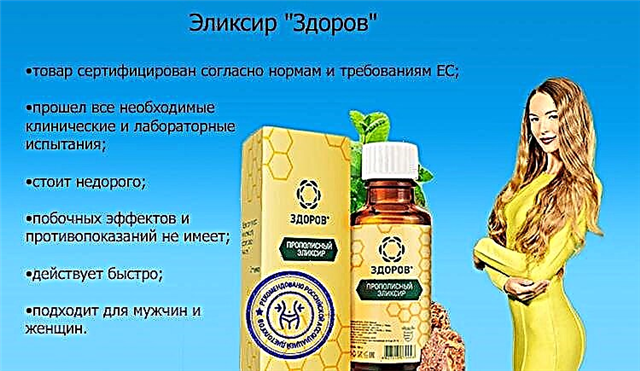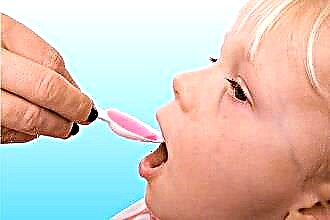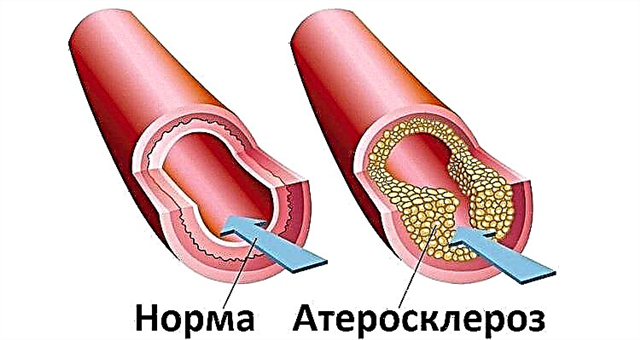Despite the fact that viruses are the cause of throat diseases in the vast majority of cases, streptococcal sore throat remains a widespread disease. Streptococcal tonsillitis is an acute infectious disease of the pharyngeal ring organs, the causative agent of which is various types of streptococcus. Group A beta-hemolytic streptococcus (SGA) is the main causative agent of angina, has a pronounced hemolytic activity, pathogenesis is associated with the production of toxins.
In the treatment of the disease, antibacterial drugs, especially of the penicillin group, remain the most effective remedy. Unlike other bacteria, SHA does not produce penicillinase, an enzyme that breaks down antibiotics in this group, making them ineffective.
Etiology
 Streptococci are bacteria that are present in the body of any person. Make up 30-60% of the total number of bacteria that are contained in the pharynx. Beta-hemolytic group A streptococcus in 70% of cases is the causative agent of tonsillitis, also called pyogenic, has the highest toxicity and is capable of destroying red blood cells.
Streptococci are bacteria that are present in the body of any person. Make up 30-60% of the total number of bacteria that are contained in the pharynx. Beta-hemolytic group A streptococcus in 70% of cases is the causative agent of tonsillitis, also called pyogenic, has the highest toxicity and is capable of destroying red blood cells.
The microorganism behaves peacefully as long as the human immune system functions fully. As soon as the protective function of the body weakens, streptococcus begins to multiply actively, acquiring signs of a pathogen. Among the main factors that contribute to the development of streptococcal sore throat:
- decrease in local and general immunity;
- recent viral or bacterial disease;
- hypothermia;
- contact with the patient and / or his belongings.
During an illness, a person becomes dangerous to others, since he excretes a large number of streptococci outside, which is highly contagious (infectious).
In addition to tonsillitis, streptococcus can cause:
- bronchitis,
- periodontitis,
- abscess,
- erysipelas,
- rheumatism,
- scarlet fever,
- glomerulonephritis,
- pharyngitis,
- pneumonia.
Streptococcal sore throat is dangerous because most of the listed diseases develop in the form of its complications.
This often happens in a weakened body or in the absence of proper treatment. Streptococcus extends far beyond the pharyngeal ring, developing pathologies, for example, in connective tissue, especially in the membranes of the heart, as in rheumatism, or autoimmune reactions of the body, as in glomerulonephritis.
Clinical picture
Streptococcal tonsillitis should be suspected in acute onset of the disease, sharp sore throat when swallowing and fever. The site of introduction and development of the pathogen becomes a focus of inflammation.
Most streptococci are found in the tonsils, which filter incoming air, water and food.
An acute inflammatory process in the tonsils can take various forms:
- catarrhal (redness of the tonsils, purulent foci are absent, cloudy mucus on the surface is noticeable),
- follicular (enlarged tonsils with pustules in the follicles),
- lacunar (a large area of inflammation on the glands in the form of gray-yellow irregular spots),
- necrotic (an extensive area of purulent inflammation, a loose peeling film on the tonsils, which is replaced by ulcers).
Symptoms
The incubation period lasts from several hours to 5 days. During the first day of the course of the disease, the main set of symptoms appears. The toxins released by bacteria are carried by the circulatory system throughout the body. Within 2-3 days the patient feels the typical signs of intoxication: malaise, headache, aching joints and muscles, pulling back pain. If the body is severely weakened, patients experience vomiting, dehydration occurs.
Streptococcal sore throat has a characteristic set of symptoms, according to which it is diagnosed:
- pus on the tonsils and the back of the throat, swelling of the tonsils;
- enlarged lymph nodes;
- sore throat radiating to the ear.
Sore throat, initially mild, intensifies over time and reaches a peak by the second day. On palpation in the area of inflammation, enlarged lymph nodes are found. The tonsils are markedly enlarged, depending on the form of the sore throat, the presence of white abscesses or yellow-gray spots of irregular shape is observed.
With catarrhal sore throat, there is only slight redness and cloudy mucus on the surface of the tonsils.
Features of the course in children
When diagnosed with streptococcal sore throat, the symptoms and treatment of tonsillitis in children, in general, repeats the therapy for adults. Bacterial forms of angina are much more common in children over 3 years old. With a severe course of the disease, by 2-3 weeks a child may develop a serious complication: abscesses or purulent lymphadenitis, which require surgical treatment, bacterial endocarditis, rheumatic fever, meningitis.
Previously, it was believed that children under 3 years of age with similar symptoms do not need to undergo bacteriological analysis. For this group of patients, the development of streptococcal sore throat was considered uncharacteristic, and therefore children under 3 years of age were considered outside the risk zone. However, in recent years, scientists have recorded the growth of patients with streptococcal tonsillitis in this group.
Most often, children become infected by airborne droplets upon contact with carriers of the infection, since streptococcus is highly infectious. A feature of the course of the disease in young children is also the fact that rheumatism does not develop as a complication. Bacteriological analysis must be done, first of all, in order to exclude other pathologies (leukemia, diphtheria, etc.).
Streptococcus is the cause of tonsillitis in children over 3 years old in 30-40% of cases.
Features of therapy
 Treatment of streptococcal sore throat in a normal course without complications lasts about 10 days. If bacteriological analysis reveals streptococcus as the causative agent of tonsillitis, the otolaryngologist in most cases prescribes a course of penicillins. The antibiotic has a low cost, streptococcus has low resistance to it, it significantly reduces the risk of complications. It has a significant side effect on the work of the gastrointestinal tract, therefore it is prescribed in conjunction with bifidobacteria.
Treatment of streptococcal sore throat in a normal course without complications lasts about 10 days. If bacteriological analysis reveals streptococcus as the causative agent of tonsillitis, the otolaryngologist in most cases prescribes a course of penicillins. The antibiotic has a low cost, streptococcus has low resistance to it, it significantly reduces the risk of complications. It has a significant side effect on the work of the gastrointestinal tract, therefore it is prescribed in conjunction with bifidobacteria.
Once in the focus, it interferes with the restoration and synthesis of the bacterial cell walls, which leads to its death. This explains its high efficiency: improvement occurs within the first day. The most effective is benzylpenicillin, which is injected 6 times a day, which is impossible with outpatient treatment. In such cases, amoxicillin (augmentin) and amoxicillin-clavunate are prescribed. The clavunic acid in the latter increases the effectiveness of the antibiotic.
A group of patients for whom the penicillin group is contraindicated are prescribed cephalosporins or macrolides:
- allergy sufferers;
- pregnant
- breastfeeding women
- infectious mononucleosis in children (streptococcal angina precedes its development).
In addition to the penicillin group, streptococcal sore throat can be treated with cephalexin or cefadroxil. These antibiotics belong to cephasporins, the effectiveness of which is due to inhibition of the synthesis of peptidoglycan, which is a structural component of the bacterial wall.
Among macrolides, azithromycin (sumamed) demonstrates high results in the fight against gram-positive bacteria. Due to the long period of elimination of the antibiotic from the body (persists for 5-7 days after administration), azithromycin is prescribed in short courses (3-5 days).
An obligatory addition to antibacterial therapy is local antimicrobial drugs. Their use increases the effectiveness of the treatment course, accelerates the healing process of patients, and reduces the risk of spreading the pathogen outside the oropharynx.
Fusafungin-based bioparox is a topical inhalation drug. Has a broad antimicrobial, anti-inflammatory effect. The drug can be used in children after 4 years of age. Application time - 10 days.
Combined preparation Tonsilgon N, which contains components of a number of medicinal herbs (marshmallow, chamomile, horsetail). The principle of action is based on increasing the phagocytic activity of granulocytes and macrophages, which makes it possible to activate local immunity.



